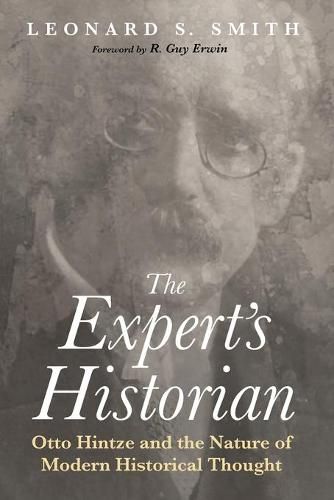Readings Newsletter
Become a Readings Member to make your shopping experience even easier.
Sign in or sign up for free!
You’re not far away from qualifying for FREE standard shipping within Australia
You’ve qualified for FREE standard shipping within Australia
The cart is loading…






This title is printed to order. This book may have been self-published. If so, we cannot guarantee the quality of the content. In the main most books will have gone through the editing process however some may not. We therefore suggest that you be aware of this before ordering this book. If in doubt check either the author or publisher’s details as we are unable to accept any returns unless they are faulty. Please contact us if you have any questions.
As we hoped, Hintze’s further development made him one of the great ones in the discipline. To be sure, he was one of those who was only known in the circle of experts, like a very high mountain in a mountain range which one first noticed from the vantage point of a high pass. –Friedrich Meinecke, 1941 (translated by Leonard S. Smith) What we call historicism is a new, unique, categorical-structure of the mind [des Geistes] that began to arise in the West in the eighteenth century and achieved authoritative currency in the nineteenth, particularly in Germany, though not in Germany alone. It is characterized by the categories of individuality and development, which postulate a view of historical reality based on the analogy of the life unit [Lebenseinheit] and the life-process [Lebensprozess]. –Otto Hintze, 1927 (translated by Leonard S. Smith) If Hintze could be included, as he should be, as one of ‘the great ones in the discipline’ in historiography classes throughout the United States, this could greatly widen ‘the circle of experts’ in this and other English-speaking countries and/or encourage history teachers to lead students to reach ‘the vantage point of a high pass’ where they could see this ‘very high mountain’ for themselves. –Leonard S. Smith, 2012
$9.00 standard shipping within Australia
FREE standard shipping within Australia for orders over $100.00
Express & International shipping calculated at checkout
This title is printed to order. This book may have been self-published. If so, we cannot guarantee the quality of the content. In the main most books will have gone through the editing process however some may not. We therefore suggest that you be aware of this before ordering this book. If in doubt check either the author or publisher’s details as we are unable to accept any returns unless they are faulty. Please contact us if you have any questions.
As we hoped, Hintze’s further development made him one of the great ones in the discipline. To be sure, he was one of those who was only known in the circle of experts, like a very high mountain in a mountain range which one first noticed from the vantage point of a high pass. –Friedrich Meinecke, 1941 (translated by Leonard S. Smith) What we call historicism is a new, unique, categorical-structure of the mind [des Geistes] that began to arise in the West in the eighteenth century and achieved authoritative currency in the nineteenth, particularly in Germany, though not in Germany alone. It is characterized by the categories of individuality and development, which postulate a view of historical reality based on the analogy of the life unit [Lebenseinheit] and the life-process [Lebensprozess]. –Otto Hintze, 1927 (translated by Leonard S. Smith) If Hintze could be included, as he should be, as one of ‘the great ones in the discipline’ in historiography classes throughout the United States, this could greatly widen ‘the circle of experts’ in this and other English-speaking countries and/or encourage history teachers to lead students to reach ‘the vantage point of a high pass’ where they could see this ‘very high mountain’ for themselves. –Leonard S. Smith, 2012